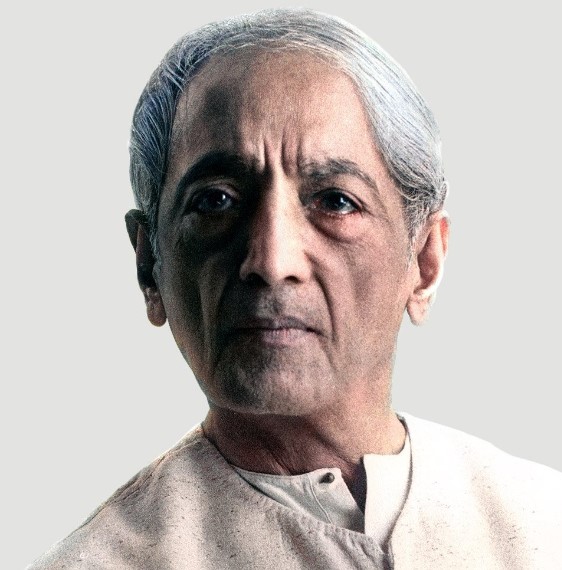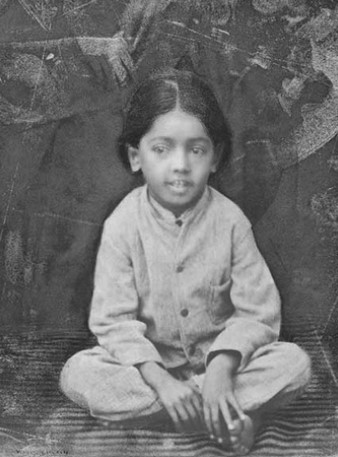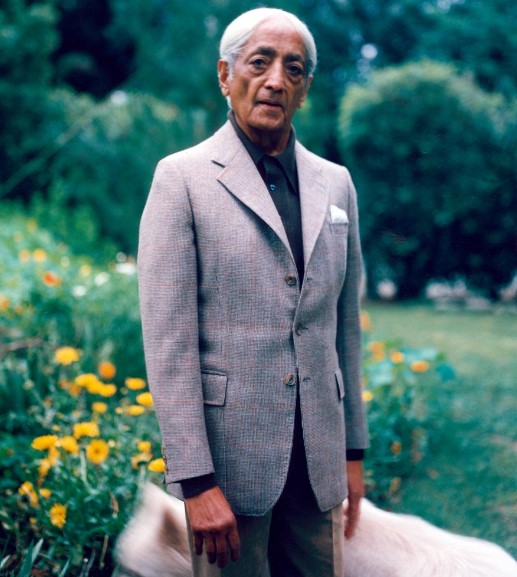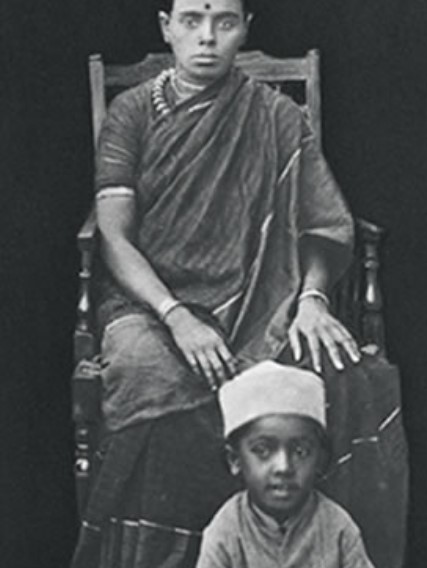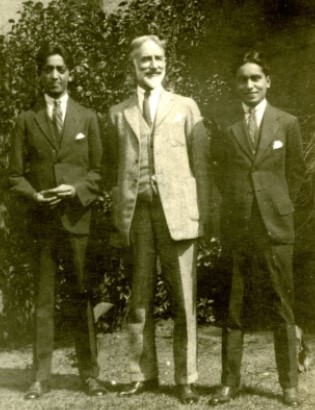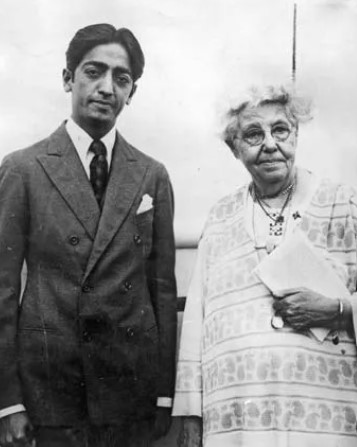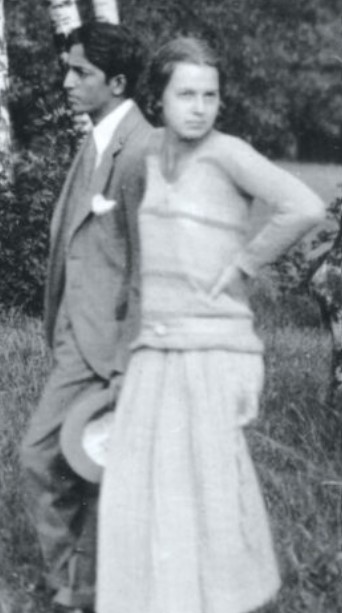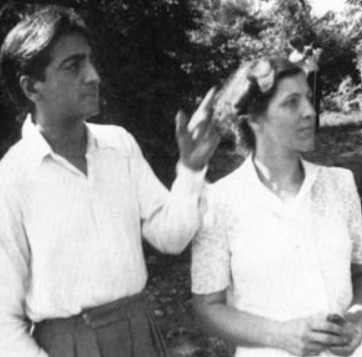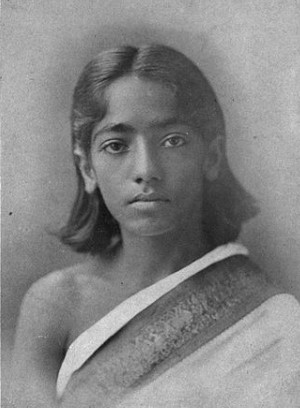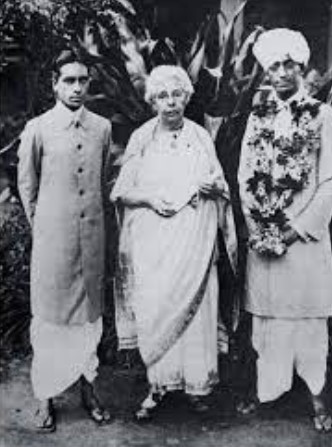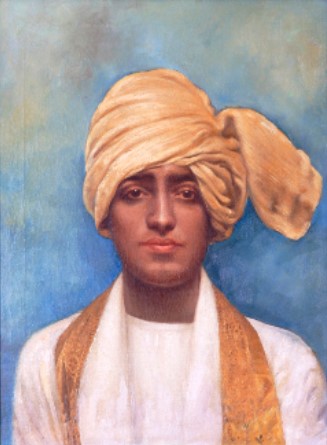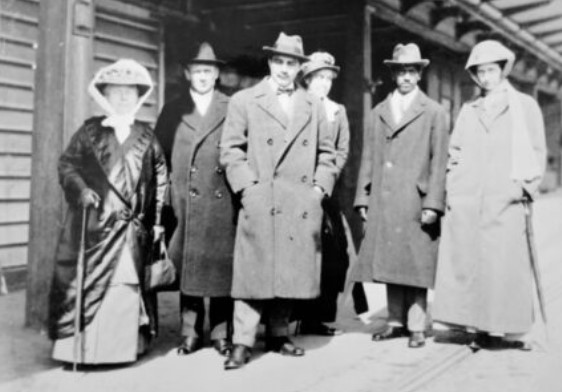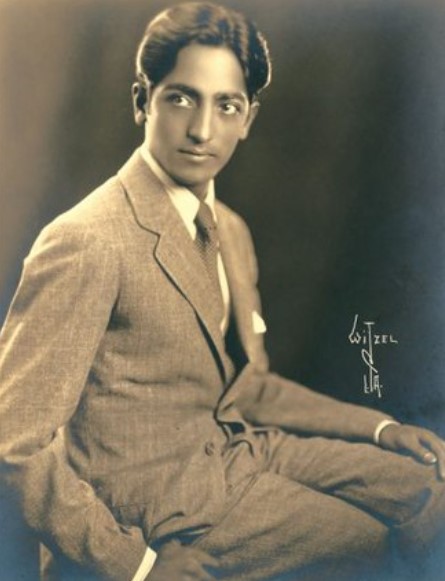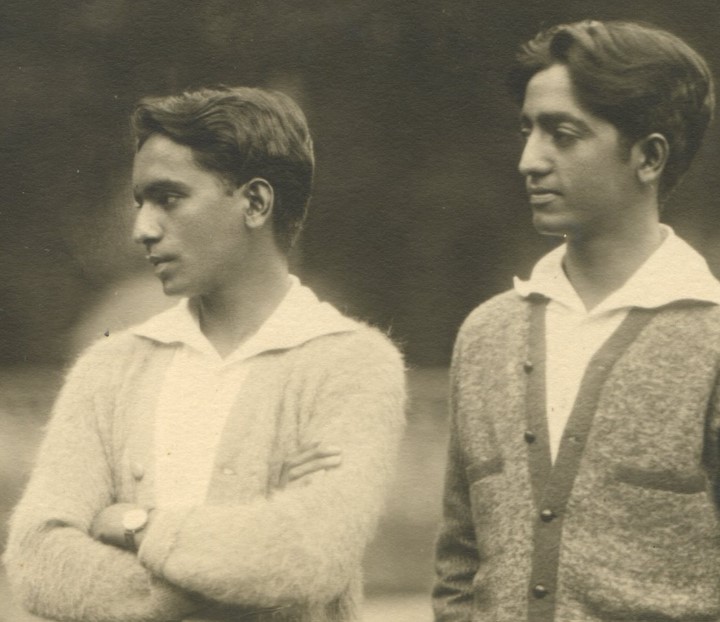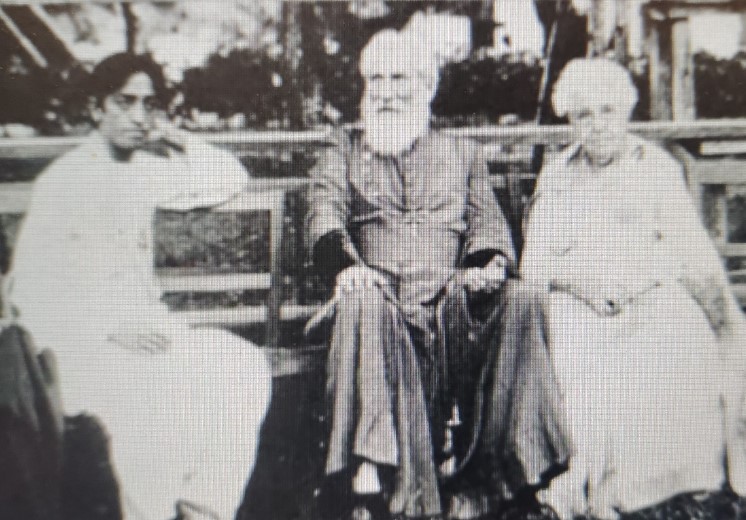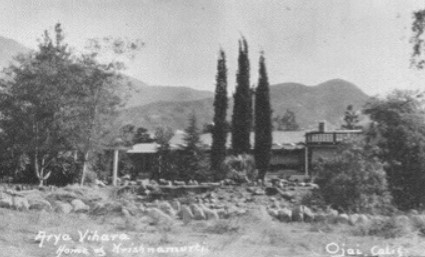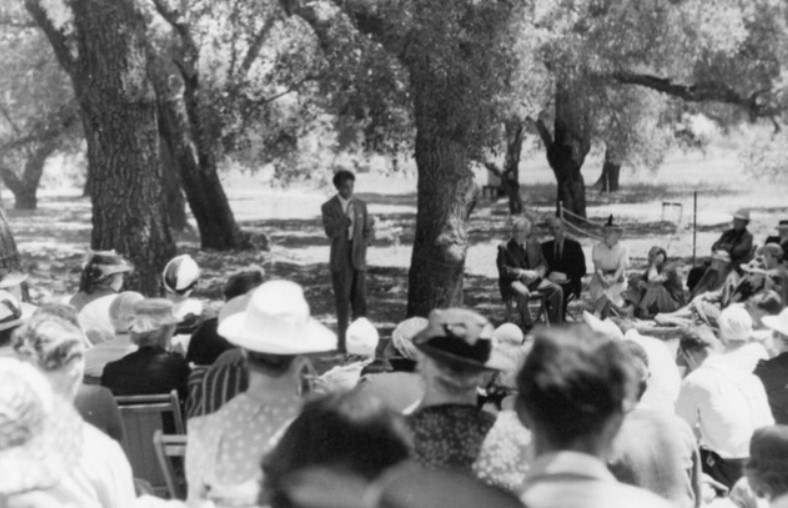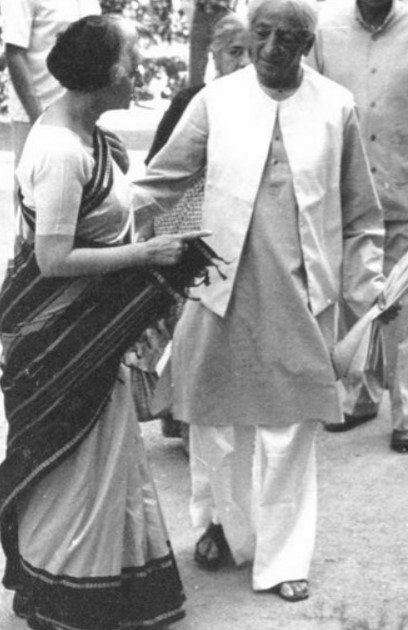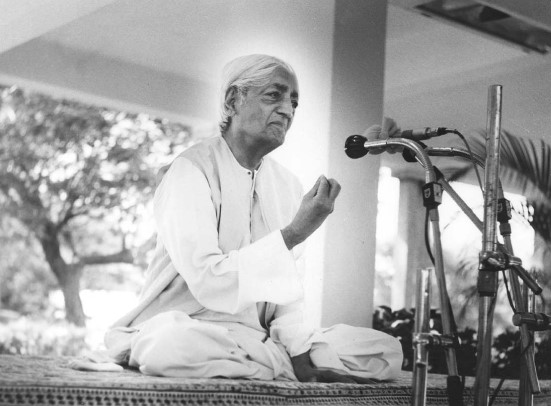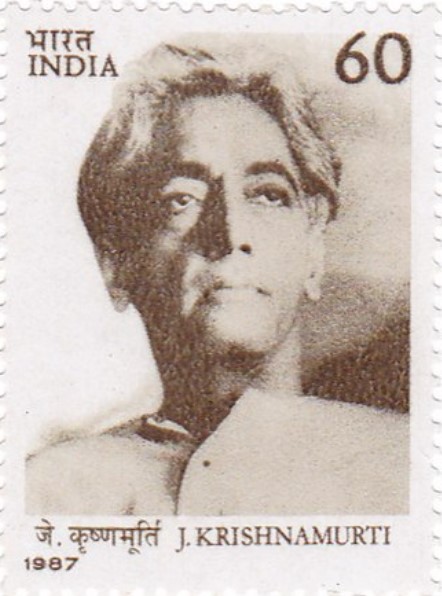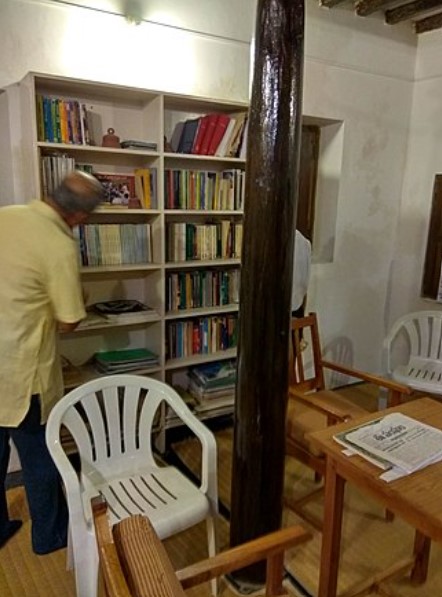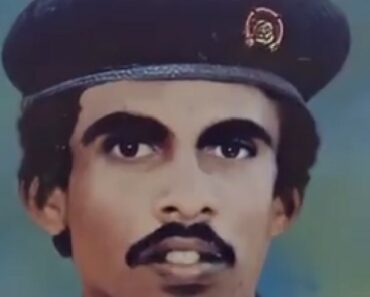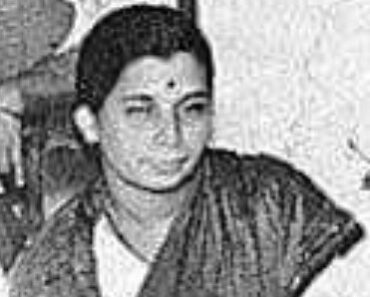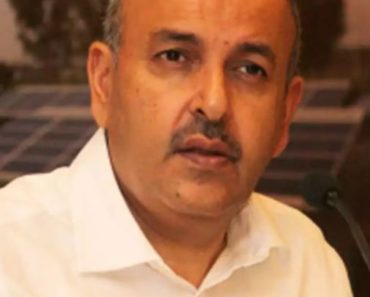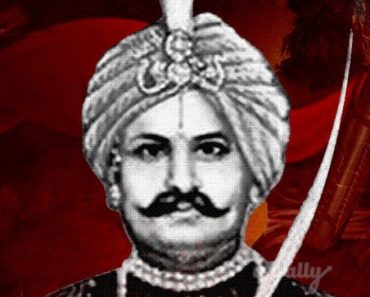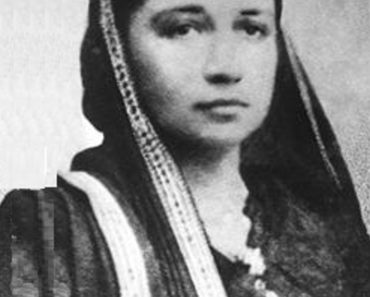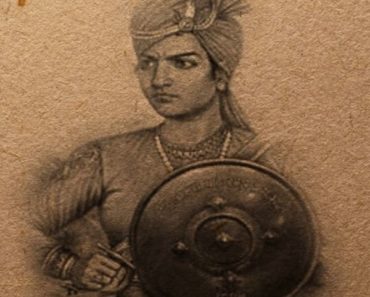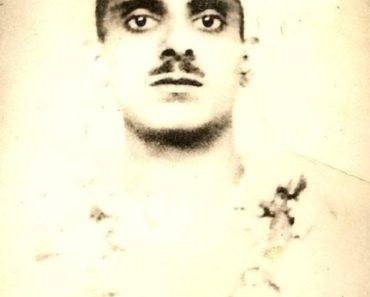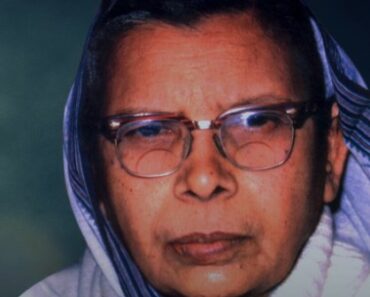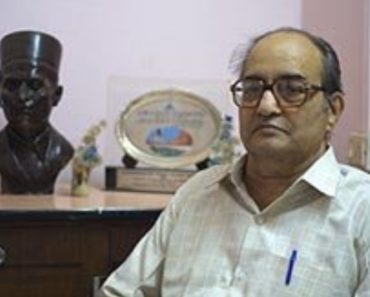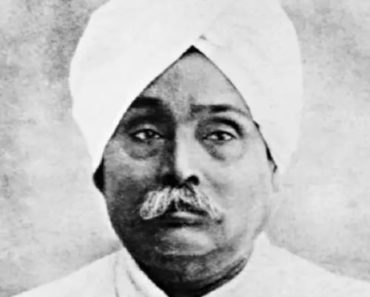Jiddu Krishnamurti was an Indian philosopher, writer, and teacher who initially pursued a spiritual career but later focused on sharing his thoughts about topics such as understanding the mind and not relying on spiritual or religious leaders. He authored several books and gave many speeches that were published in various languages and formats. The followers of Krishnamurti are running several schools around the world based on his educational ideas and sharing his works.
Contents
Wiki/Biography
Jiddu Krishnamurti was born on Saturday, 11 May 1895 (age 90 years; at the time of death) in Madanapalle, Madras Presidency, British India. He decided to drop out of higher education once he had made several unsuccessful attempts at Paris-Sorbonne University. Instead, he’s been concentrating on learning other languages and has become quite good at speaking them. Due to conflicting sources, the exact date of Krishnamurti’s birth has not been established. He was born on 11 May 1895, as suggested by Mary Lutyens, a British writer, and Christine Williams noted variations in the dates of his birth from 4 to 25 May 1896. On the basis of a horoscope, Krishnamurti himself calculated his date of birth, but he did not believe it. Krishnamurti and his family moved to Cudappah in 1903, after he had suffered a malaria attack. He was a delicate and gentle child who sometimes appeared a bit slow and used to be treated unkindly by his teachers and father. When he turned eighteen, he wrote about seeing his deceased sister and mother in his memories and dreams.
From a very early age, he’d felt his connection to nature. His father retired from the British service in 1907, and soon, the family moved to the headquarters of the Theosophical Society in Adyar. Krishnamurti’s father was employed there as a clerk. His family followed vegetarianism, and he was a vegetarian since childhood. He firmly opposed the consumption of meat for religious and philosophical reasons.
Physical Appearance
Hair Colour: Black
Eye Colour: Salt and Pepper
Family
He grew up in a Telugu-speaking Brahmin family.
Parents & Siblings
His father, Jiddu Narayaniah, was an employee of the British administration. His mother’s name is Sanjeevama. Krishnamurti had a loving relationship with his mother Sanjeevamma, who died when he was ten.
He was one of his eleven siblings, six of whom survived into adulthood. Jiddu Nityananda, Dr Jiddu Sivaram, and Jiddu Sadanand were his brothers. His one sister died in 1904.
Wife
He was unmarried.
Other Relative
Annie Besant, a British social reformer, was his adoptive parent.
Relationships/Affairs
Krishnamurti fell in love with an American author named Helen Knothe when she was 17 years old. She was associated with the Theosophists in 1921. After a few years, he realised that his obligations and anticipated life purpose made it challenging for him to maintain regular personal relationships. By the middle of the 1920s, their relationship was no longer.
Krishnamurti and Rajagopal were close pals, but Krishnamurti started having feelings for Rosalind, the wife of Rajagopal. Reportedly, Krishnamurti and Rosalind had a romantic relationship that lasted about 25 years. Krishnamurti and Rosalind began a secret romantic relationship in 1932. This went on until the 1950s, but their feelings for each other started to change because they argued a lot, especially about Krishnamurti’s feelings for Nandini Mehta. Some people find it hard to believe, but Rosalind had three secret and illegal abortions during this time. These pregnancies from her and Krishnamurti caused a lot of problems with lies, blaming, and sadness for everyone involved in the 1950s. [1]Prem Rawat
Religion/Religious Views
According to Jiddu Krishnamurti, religion is an organized belief with rituals, beliefs, and sacred books. He claimed that different religions create conflict through conditioning which causes hostility among believers and towards others. Despite preaching love and worship, religions fuel fear with reward-punishment doctrines and competitive beliefs that foster suspicion. [2]Good Reads According to him,
“What we call religion is merely organized belief, with its dogmas, rituals, mysteries and superstitions. Each religion has its own sacred book, its mediator, its priests and its ways of threatening and holding people.”
“Most of us have been conditioned to all this, which is considered religious education; but this conditioning sets man against man, it creates antagonism, not only among the believers, but also against those of other beliefs.”
“Though all religions assert that they worship God and say that we must love one another, they instill fear through their doctrines of reward and punishment, and through their competitive dogmas they perpetuate suspicion and antagonism.”
Caste
He belonged to the Brahmin community. [3]Swarajya Magazine
Autograph
Career
In April 1909, Krishnamurti met Charles Webster Leadbeater, who believed that Krishnamurti had a special spiritual insight. Leadbeater noticed a remarkable aura around Krishnamurti. Leadbeater thought that Krishnamurti could become a spiritual teacher and saw him as a potential vehicle for a spiritual being called the Lord Maitreya, based on Theosophical beliefs. At first, Krishnamurti seemed unclear and not very clever, but later on, Leadbeater and others in the Theosophical Society began teaching and preparing him for his expected role as a spiritual leader. Krishnamurti and his brother were taught privately and got to experience a wealthy life in high society in Europe. Even though he had trouble with school before, he quickly picked up English and began speaking and writing well when he was fourteen.
During that time, Krishnamurti became very close to Annie Besant and saw her as a mother. At first, his father agreed to let Besant take care of Krishnamurti legally, but as more people paid attention to his son, his father’s role became less important. In 1912, his father went to court to change the guardianship arrangement with Besant, but after a long time in court, Besant ended up being the guardian of both Krishnamurti and his brother, Jiddu Nityananda. As they were separated from their family and home, Krishnamurti and his brother relied on each other more, and they used to travel together in the years that followed.
In 1911, a group called the ‘Order of the Star in the East (OSE)’ was formed by the Theosophical Society to prepare for the World Teacher’s arrival. Krishnamurti was selected to lead this group, and other important members of the Theosophical Society got various roles. People who believed in the World Teacher idea could join this group, but controversies arose shortly after it started, causing disagreements within and outside the Theosophical Society. Many Hindus and the Indian media also became part of this disagreement.
A renowned biographer, Mary Lutyens, wrote in one of her writings that Krishnamurti used to think that he would become the World Teacher with the right spiritual guidance. Leadbeater and others made a plan for his day, including exercise, learning different things, religious teachings, yoga, meditation, and how to act in British society. Leadbeater secretly taught Krishnamurti special things about mysticism. Even though he was good at sports, regular school was hard for Krishnamurti, and he had trouble with his studies. After a few times of trying and not succeeding, he gave up on going to university. He learned many languages and could speak them well. The Theosophists carefully shaped his public appearance and showcased him seem serious, knowledgeable, and not very connected to things. Later, these things stayed with him all through his life. He had a sort of special presence that made people respect him. However, as he got older, he began to go against the rules and feel different emotions. Soon, he did not like the strict plan for his life, and he was not comfortable with all the attention. Sometimes, he even wondered about the future they were choosing for him.
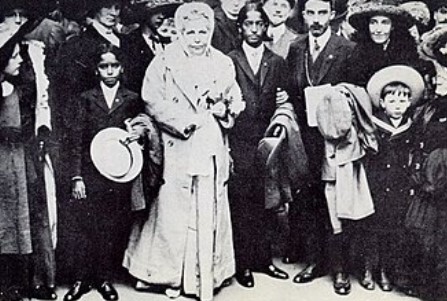
Krishnamurti in England in 1911 with his brother Nitya and the Theosophists Annie Besant and George Arundale
In April 1911, Krishnamurti and Nityananda went to England. On this trip, Krishnamurti spoke to people from the OSE in London for the first time. Once they arrived in England, he started writing articles, which were later published in booklets and magazines of the Theosophical Society linked to the OSE. From 1911 to 1914, he and his brother, Nitya, travelled to various European countries with friends who were part of the Theosophist group. During this time, an American named Mary Melissa Hoadley Dodge, who lived in England, helped them with money.
Krishnamurti, the head of the OSE, began giving presentations and engaging in conversations all across the world after World War I ended. He was accompanied by his brother Nitya, who was in charge of planning things for the Order. Krishnamurti continued writing while focusing on the work of the Order and its members. Even though he was a little unsure when he started speaking; however, with time, he gained confidence and improved his speaking skills. Krishnamurti and Nitya travelled to California in 1922 from Sydney in the hope that the climate in the Ojai Valley would benefit Nitya’s tuberculosis, and they remained at a cottage there for some time. Krishnamurti was concerned about Nitya’s ill health. Rosalind Williams, an American, who soon got close to them and had a significant part in Krishnamurti’s life, was a person they met at Ojai. They had never been without their Theosophical Society managers before. They enjoyed being in the Ojai Valley. Later, people who supported Krishnamurti bought a house and land for them there, and that became Krishnamurti’s home.
In Ojai, in August and September 1922, Krishnamurti underwent a transformational experience. It is reportedly been described as a spiritual awakening or a mental and bodily alteration by some individuals. This transformation comprised a three-day spiritual encounter as well as the longer-lasting state known as “the process.” Till his death, this condition frequently returned. Witnesses claim that Krishnamurti’s spiritual awakening began on 17 August 1922, when he felt a terrible ache in his neck. Over the next two days, the pain, loss of appetite, and occasionally bizarre speech got worse for Krishnamurti. Though he appeared to be asleep, he claimed to be cognizant and to have had a unique experience. On the third day, the feelings and experience got stronger, and it ended with a peaceful feeling. The process then carried on in September and October 1922. It would almost happen every night with different pain and discomforts, and occasionally, he developed childlike behaviour or lost consciousness. Some spiritual academics have referred to these experiences as “the benediction,” “the immensity,” or “the otherness.” The reports of Krishnamurti’s magical encounters quickly spread like wildfire. These rumours peaked at the same time as the Theosophical Society Convention of 1925 was organising its 50th-anniversary celebrations. People began anticipating a huge event at the convention. While more and more people began liking Krishnamurti, he was starting to feel uneasy because of all the attention. At the same time, some important people in the Theosophical Society were trying to make themselves look good because of what they thought was going to happen. It’s said that different big groups started saying they were guiding Krishnamurti spiritually, and this caused arguments. These problems inside the group made Krishnamurti feel like he was getting farther away from the Theosophical Society. Nityananda’s health issues began recurring during this period.
Nityananda passed away in Ojai on 13 November 1925, at the age of 27, as a result of complications from the flu and tuberculosis. Although Nitya had been unwell, his death was a big shock for Krishnamurti. This event made Krishnamurti lose some of his trust in Theosophy and the leaders of the Theosophical Society. They had told Krishnamurti that Nitya would be okay. Krishnamurti used to think that Nitya was important for his life’s purpose, and he didn’t believe that Nitya would be allowed to die. Later, even Annie Besant and others close to Krishnamurti mentioned this belief in their writings. Nitya was the last connection to his family and his early years. Nitya was his best friend and companion, and Krishnamurti was deeply affected by his death. Some people thought that Krishnamurti was hurt by losing his brother. However, after 12 days, he seemed calm, bright, and not emotional anymore. It was believed that there was no indication of what he had experienced. Over the following few years, Krishnamurti’s new perspectives continued to expand. Instead of the Theosophical expressions he had been using, he began employing new ones. He claimed in one of his writings that he came to a turning point in 1929. He said no to staying with the Order of the Star, even when Leadbeater and Besant tried to make him change his mind.
Krishnamurti abolished the Order of the Star in 1929 during a conference at the yearly Star Camp in the Netherlands. As a result, many Theosophists soon began to oppose him, notably Leadbeater, who thought the strategy had failed. Krishnamurti claimed that in order to assist people in achieving complete freedom, he opposed organised religion, gurus, and the teacher-follower dynamic. He never explicitly stated that he was not the World Teacher, but he frequently indicated it didn’t matter and provided ambiguous responses.
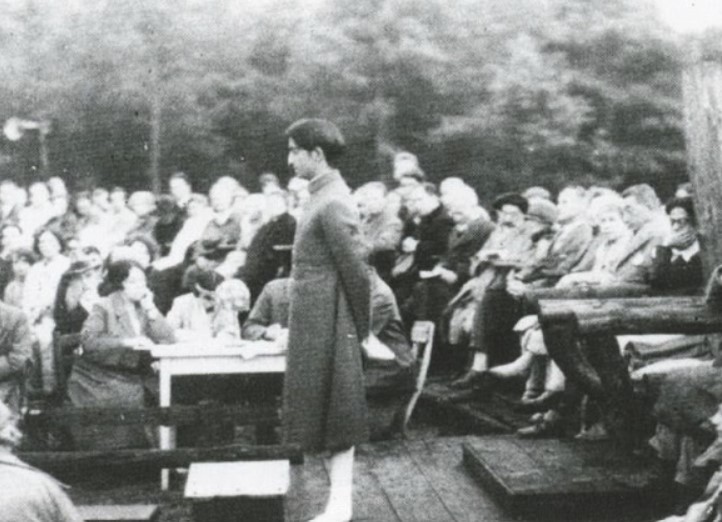
Krishnamurti dissolved the Order during the annual Star Camp at Ommen, the Netherlands, on 3 August 1929
Thereafter, Krishnamurti renounced his positions in organisations affiliated with the Order, such as the Theosophical Society. He also gave the Order’s money and gifts of property, such as a castle and land, back. He gave talks and had articles published between 1930 and 1944 by the “Star Publishing Trust” (SPT). The hub of this effort was Ojai, California, where Krishnamurti, Rajagopal, and Rosalind Williams (Rajagopal’s wife) started residing in a home there named Arya Vihara.
In the 1930s, he went to different countries to talk about and write down his ideas about life. During this time, he met a man named Aldous Huxley, who became a very good friend. During World War II, Krishnamurti didn’t show up in public for around four years. He stayed and worked on a farm in Ojai. He began teaching again in 1944 and created a new group called “Krishnamurti Writings Inc.” (KWINC) to spread his ideas. After that, he kept giving talks to people everywhere and met important people like scientists and religious leaders.
Literary Works
- At the Feet of the Master (1910)
- The Kingdom of Happiness (1928)
- The Pool of Wisdom (1928)
- The First and Last Freedom (1954)
- Commentaries on Living (1956–1960)
- Freedom from the Known (1969)
- Krishnamurti’s Notebook (1976)
- Krishnamurti’s Journal (1982)
- Krishnamurti to Himself (1987)
Controversies
Bitter Relations With Rajgopal
In the 1970s, Krishnamurti’s strong connections with the Rajagopal began deteriorating, leading him to take Rajagopal to court. Krishnamurti was attempting to recover the property, funds, and rights in his works which had been taken over by Rajagopal. In 1971, the court proceedings began and lasted for several years. These proceedings were accompanied by various complaints. During the judicial procedure, some of Krishnamurti’s possessions were returned to him when he was alive, and in 1986, following his death, all remaining issues were resolved between the parties. [4]Osho News
Death
On 17 February 1986, Jiddu Krishnamurti died in Ojai, California, U.S., after suffering from pancreatic cancer. [5]The New York Times
Facts/Trivia
- Jiddu Krishnamurti followed a vegetarian diet. [7]Los Angeles Times
- It is said that Krishnamurti’s philosophy evolved even before he disbanded the Order of the Star. It was difficult for those who admired him to comprehend such changes. Some of them, including Besant and Emily (the mother of Mary Lutyens), were confused by his novel concepts, his language, and his declarations. He continued to have positive ties with some of the Theosophical Society’s members and ex-members despite abandoning the organization’s principles and practises.
- He claimed in one of his teachings that he was worried about how his teachings would be received after his demise. According to him, he did not want anyone to fully comprehend him or take over his role as his successor. A few days before he passed away in 1986, he allegedly complained to his followers that they did not fully comprehend his experience and the lessons he wished to impart. He thought that once he was gone, his special way of seeing things would also be lost.
- Following the Second World War, Krishnamurti had the opportunity to interact with prominent Indians including Prime Minister Jawaharlal Nehru. He made friends with physicist David Bohm in the early 1960s because they had similar views on the nature of the universe and human society. In the 1970s, Krishnamurti met with former Indian Prime Minister Indira Gandhi multiple times, and they had serious and in-depth discussions.
- Krishnamurti passed away when he was 90 years old on 17 February 1986 because of pancreatic cancer. His health got worse around nine months before he died. He began to feel very tired. In October 1985, he moved from England to India and had a fever and lost weight. After his last talks in Madras, he went back to Ojai. In Ojai, doctors found that he had pancreatic cancer. When he knew that the disease couldn’t be cured, he spent his last days at his Ojai home. His friends and medical experts took care of him. He stayed clear-minded until he died on 14 February 1986. As per his wish, there was no big ceremony held after he died. His ashes were divided and put in Ojai, India, and England.
- In 1987, a postal stamp was issued in his name by the Government of India to honour his contributions to the field of philosophy.
- Krishnamurti founded a lot of schools in India, England (Brockwood Park School), and California (Oak Grove School). He had goals for education that included thinking about the whole world, caring about people and nature, and integrating spiritual feeling with scientific thinking. The Krishnamurti Foundations, made in the 1960s, take care of seven schools all around the world.
- Krishnamurti visited important religious leaders in India while travelling the world. Aldous Huxley, George Bernard Shaw, the Dalai Lama, and other people were influenced by him. Even after his passing, his writings, books, audio recordings, videos, and digital resources are still widely used. The official Foundations look for his archives, promote lessons in many languages, create websites, and plan international events globally. His ideas also inspired a song called “Imprint of Pleasure.”
References

